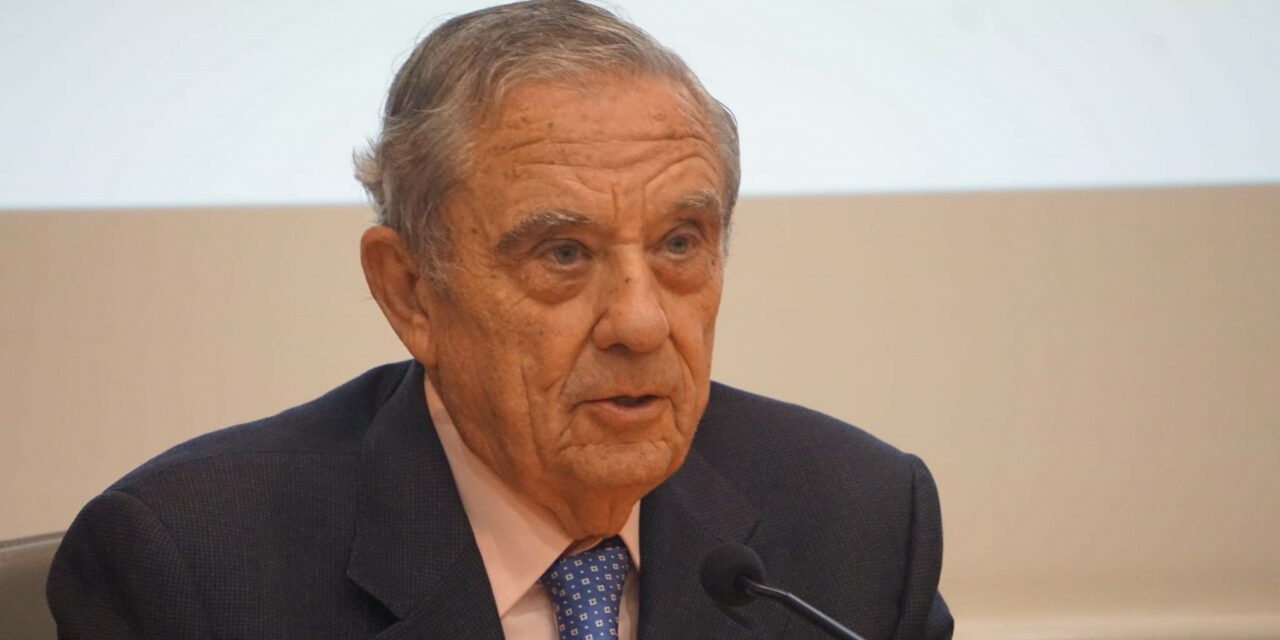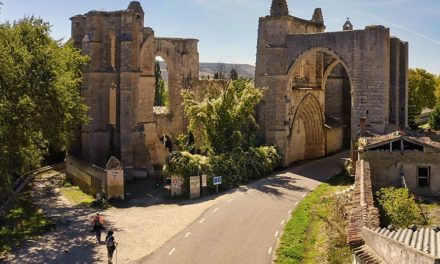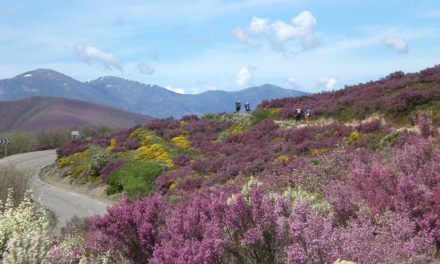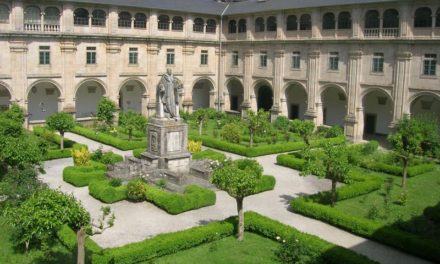Alfonso García López (Madrid, 1942), since his retirement in 2012 as a notary for the city of La Coruña, has dedicated his free time to continue writing. He regularly collaborates with personal articles in the press: in El Correo Gallego, with a fortnightly column entitled “With common sense”, and a weekly column in the digital newspaper Mundiario.com.
“Since 1999 I have published 15 books on different topics, because “variety is what amuses me.” He has written two books of children’s stories, two about the Red Cross and the ICRC, two about grandparents of particular politicians of today, three about the economic history of Galicia… and the extraordinarily well- documented ‘The port of La Coruña on the English Way to Santiago de Compostela,’ a book that we have talked to him about and whose translation into English is currently being prepared.
-Our first question points to his link with the Camino de Santiago. We are interested in knowing if it came to him because of his interest as a researcher and writer or if there was already some other link with the Camino.
My interest in El Camino arose when I did it on several occasions, which allowed me to live its meaning within myself and admire its richness from religious, historical, cultural perspectives in the broadest sense of the word, sociological – and as a way of civilization. From that experience arose my interest as a researcher, in order to know it better.
Subsequently, I focused on the English Way, noting the little existing knowledge of it -myself included- in terms of its history and importance between the 11th and 16th centuries, with the aim of collaborating in the dissemination of its true dimension: the sea-going route from the farthest north of Europe to Santiago de Compostela.
-The English Way and, in particular, the port of Coruña. What attracted you in particular to that Camino and to the city and port of Coruña? What was your motivation for embarking on such an investigation?
I was attracted by the maritime odyssey that involved sailing in ships of between 20 and 30 tons, from the Baltic Sea to La Coruña, with very limited aids to navigation, risks of storms, shipwrecks, capture by pirates and corsairs-, overcrowding, lack of hygiene and limited drinking water, among other difficulties.
La Coruña was the usual port of arrival for pilgrim ships, due to its proximity to Santiago, the shelter that port offered and its commercial possibilities.
Other ports, such as Ferrol, Villagarcía, Noya or Muros, for example, also received pilgrims, but to a lesser extent. The statistics compiled by some British historians make that clear.
-I’m interested in your telling us a little about the writing process that I believe, also, in the case of this book, coincided in part with the covid-19 pandemic. How was the job? Was it easy to access the sources and bibliography? Are there many publications and research on the English Way? References or people or groups that were of help to you?
Fortunately, today there is a lot of digitized bibliography on the Internet and archival information is also accessible from a distance, after analyzing online catalogs and requesting and paying for reproduction rights. The main drawback is the delay in shipments, due to a shortage of personnel, especially during the pandemic.
On the English Way there is a partial bibliography referring to specific topics, such as literature, music, monuments, by country, etc., but there are few informative books that deal with the topic as a whole: pilgrimage, history, religion, countries of origin of the pilgrims, designated pilgrims, etc.
The publications of the acts of the international congresses on the Jacobean world have been a great help. Regarding the archives, I will cite the one of the Kingdom of Galicia, the Municipality of La Coruña and the one of the Cathedral of Santiago, among many others.
-His book is entitled ‘The port of La Coruña on The English Way’, but the truth is that he only begins to mention the port on page 133, dedicating the previous ones to introducing the Camino de Santiago and, in particular, maritime pilgrimages. He talks about the pilgrimages from England and Ireland, but also from Germany, the Scandinavian Countries… What weight do you think maritime pilgrimages had? And what weight did the countries of origin have that you have mentioned?
It seemed appropriate to start the book with references to the Apostle, the Codex Calixtinus, the pilgrimage and the pilgrim to Santiago. The nucleus of the book is constituted, on the one hand, by the analysis of the existing information on pilgrimages to Santiago from England, Ireland, Scandinavian and Baltic countries, and, on the other, the evolution of the city and the port of Coruña, as a consequence of the arrival of pilgrims on their way to Compostela.
Existing statistics focus on England -mainly the 15th and 16th centuries-, which was the country in which the devotion to Santiago was most intense, although without ruling out others, such as Germany.
-Focusing more on the port of Coruña, its weight in the sources and documentation seems undeniable and makes the city a Jacobean landmark: Could you tell us a little about the role that this port had on the Camino de Santiago?
There were four different eras. The oldest pilgrimages were linked to the crusader expeditions on the way to the Holy Land, which stopped in Coruña to ask the Apostle for his help in defending the Holy Places. During the period of maximum splendor of the Hanseatic League, its commercial ships admitted pilgrims bound for Coruña; The disadvantage of this custom was its duration, since it stopped in numerous Baltic ports, in the North Sea and in the south of England, to load and unload merchandise.
During the 15th and 16th centuries, the peak of pilgrimages, there were direct regular routes from the south of England to A Coruña, especially in jubilee years.
Naturally, there is knowledge of “illegal” pilgrimages, which left without the required authorizations and do not appear in the statistics kept in England.
There are written testimonies from pilgrims who saw more than 80 pilgrim ships of various origins in the port of La Coruña and, at some point, up to a thousand devotees of the Apostle congregated in the city.
-It also addresses the English Way from Coruña to Santiago: Could you highlight here some milestones on that route to Compostela?
Clearly, there is an official tendency to underplay the English Way, reducing it to the itinerary between La Coruña, or Ferrol, and Santiago. Which means forgetting its history and its true dimension, since the pilgrims came from the most remote places in northern Europe.
Perhaps the explanation lies in the fact that since the middle of the 16th century, with the Reformation, pilgrimages suffered a significant setback from the countries that had separated from the Church of Rome.
-Something that can be seen in your book and in conversation with you is that the Camino Ingles and the relationship of the city of Coruña with the pilgrimage are still quite unknown: What remains to be done? Is it a matter of research, involvement with the administrations, pilgrims and Jacobean associations?
I believe that the public administrations -Xunta de Galicia, Provincial Council of La Coruña, City Councils of La Coruña and Ferrol- Chambers of Commerce, Shipping Companies, business organizations and various associations, should lead to knowledge of the English Way in its true dimension.
There are numerous associations of friends of the Camino de Santiago, in Spain, in Europe and in the world, which could be essential collaborators so that the Camino Inglés will one day be included in the indicative list of intangible World Heritage assets, as already stated. there is the French Way and its derivations -Camino del Norte, Camino Primitivo and Camino Lebaniego.
-To finish, I would like to ask you about what you are doing at present and about future projects, especially if you have any project or desire related to the Camino de Santiago.
The recently presented book, “The port of La Coruña on the English Way to Santiago de Compostela” -sponsored by Xacobeo 21-22, the Port Authority of La Coruña and the Royal Order of Knights of María Pita- aims to be a modest contribution to this work by its dissemination in Spain and Europe.
A few days ago we were received by the Manager of the Galician Tourism Agency, to whom we presented a dissemination scheme, which would begin with the translation of the book into English.
The R.O. of DC. de María Pita has championed this objective since 2017 and intends to continue the task. As for me, I am adding information to the original text and making some other amendments with a view to its final translation.











